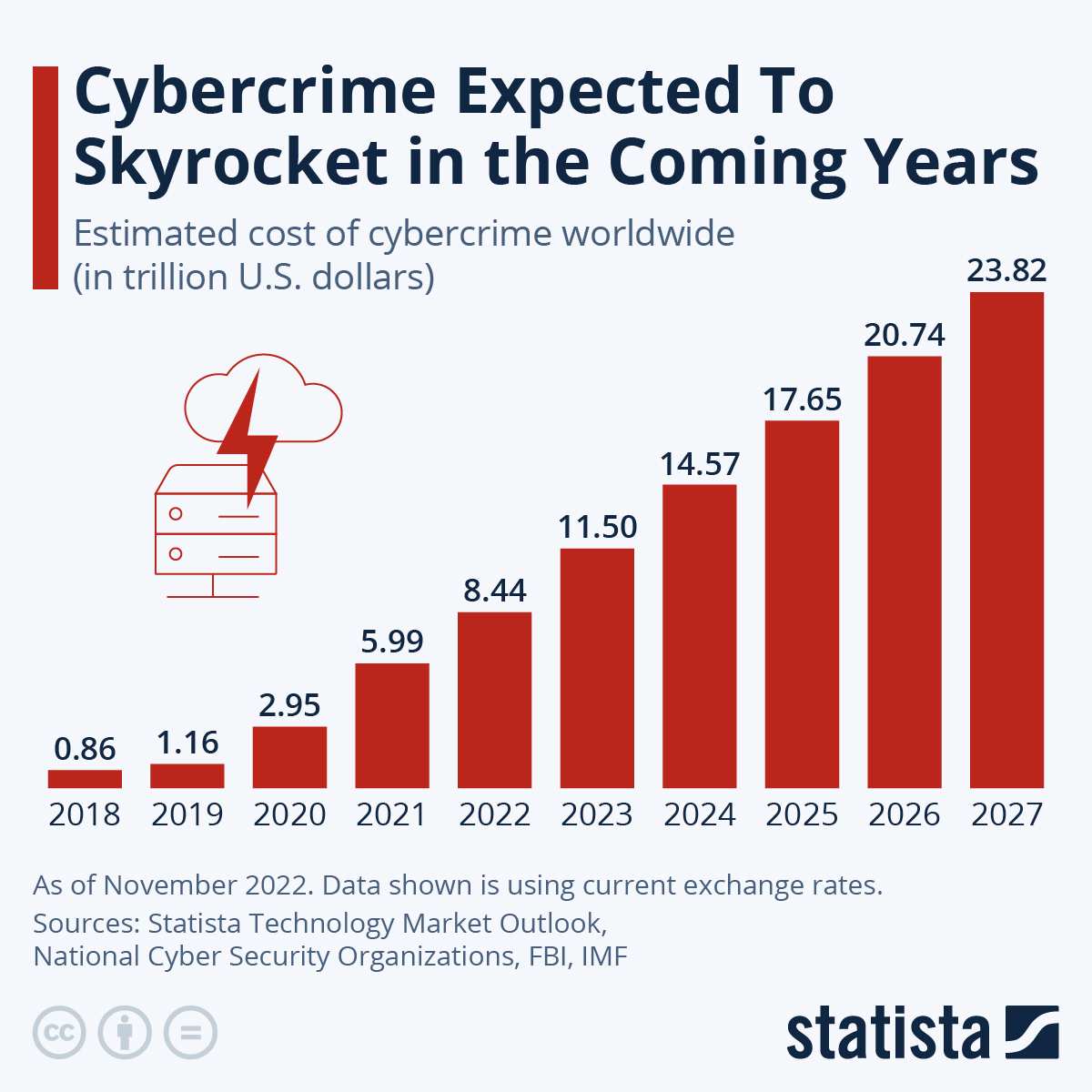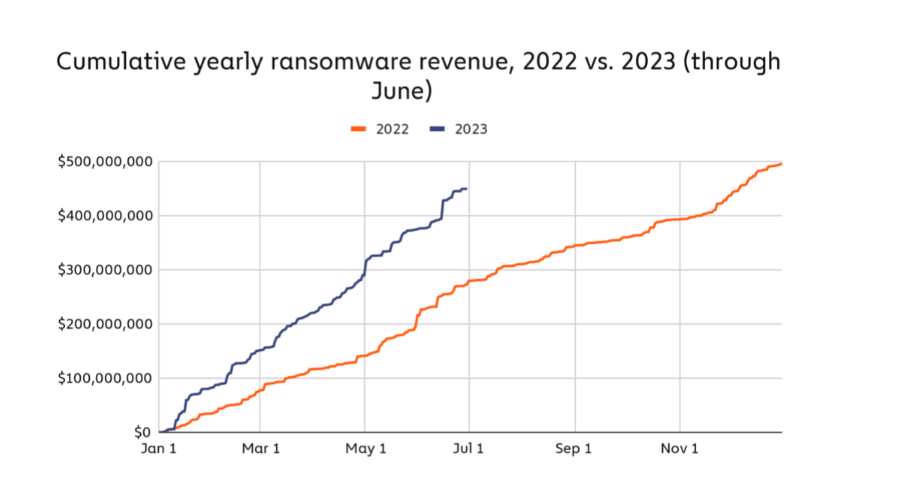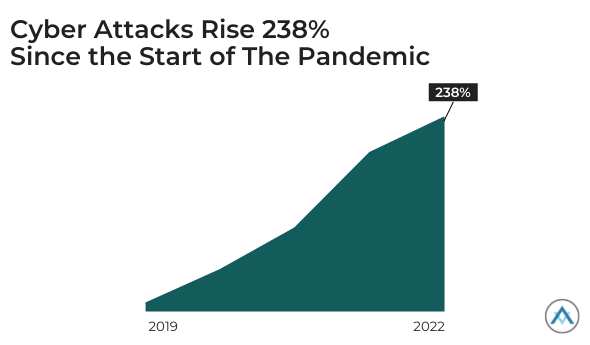Since the beginning of 2023, small-scale businesses and giant corporations have suffered from various cybersecurity threats. And with elements like AI, cloud services, and cryptocurrency introduced into the mix, the challenges get more complicated. Here is a list of the top five cyber awareness challenges dominating the cybersecurity realm. Let’s get right to it:
Contents
Cybersecurity in 2023: How is the year going so far?
We didn’t even make it six days into the new year and had a legendary data breach at our hands. Twitter suffered from malicious hackers who leaked over 200 million user emails, costing its revenue and reputation. With such a promising start, cyber security challenges are escalating every month.
Ransomware attacks are also skyrocketing, and attackers have already made over $449 million within the first six months of 2023. The damages from ransomware attacks did not reach $500 million last year.
With notable breaches and cyber security attacks on big tech corporations like Microsoft, Twitter, and even OpenAI’s ChatGPT, things are certainly not looking up for the cyber world for the remainder of the year.

Top 5 Cyber Awareness Challenges in 2023
Ransomware attacks
Ransomware has been around for decades, and it will not go anywhere anytime soon. Security experts claim that 2023 could give 2021 a run for its money, with the ever-increasing damage cost predicted to hit $898.6 million by the end of the year.
Simply put, ransomware attacks encrypt sensitive information and deny legitimate users access to their data. Attackers benefit from this cybersecurity attack by demanding ransom payments from users and organizations to recover their data files.
Allan Liska, a ransomware expert, shared:
“The ransomware groups who are still around are really good at what they do, and it is hard for organizations to secure against all possible points of entry. And what’s worse, the groups seem to be mastering new techniques.”

Supply Chains attacks
Even if organizations are vigilant and upkeep their security protocols, attackers can still exploit their infrastructure using vulnerabilities in the network of some external suppliers or third-party vendors.
Security experts believe open-source software to be the key source behind supply chain risks. Only recently, two banks were targeted by open-source software supply chain attacks. And that is not all. A report shared that almost 61% of US-based organizations have been impacted by software supply chain attacks over the past year.
Senior Director of security operations Matt Jackson explained:
“This type of attack already rose by more than 300% in 2021, and I anticipate this trend will continue in 2023, with these attacks becoming more complicated and intricate.”
Identifying and mitigating security threats using effective risk management protocols and building a more secure infrastructure is crucial because even if one link in the supply chain is vulnerable, it would cost everyone down the line.
Cloud Third-Party Threats
Data shows that 60% of all corporate information is stored in the cloud. With organizations continuing to adopt cloud storage and computing services, corporate information and trade secrets become much more vulnerable.
Attackers have been targeting these cloud services and infrastructures to access sensitive data and gather information to exploit further vulnerabilities. These attacks can even lead to hackers compromising entire IT infrastructures. And if organizations fail to incorporate cloud security best practices, these exploits will only increase.
In a recent incident on 11th July, Microsoft reported that a group of Chinese hackers exploited a vulnerability in Microsoft’s cloud services to spy on U.S. government agencies. The person briefing on the attack stated:
“Inside the government, the attack showed a significant cybersecurity gap in Microsoft’s defenses and raised serious questions about the security of cloud computing.”
Remote work risks
According to Forbes, as of 2023, 12.7% of the full-time workforce chooses to work from home, and 28.2% have a hybrid work arrangement. While such working models cater to the needs of today’s workforce, they also put corporate networks and employee security at high risk.
Hackers can easily break into organizational networks by luring remote working employees using phishing emails, malware attacks, or even social engineering attacks. With remote work becoming a trend after the pandemic, experts have analyzed the relations between the WFH lifestyle and increasing data breaches.

Organizations need to educate employees on safe remote work practices to keep such risks at bay. Using reliable VPN services, two-factor authentication, encryption, and anti-virus is a must to ensure that the environment in which an employee is choosing to work is safe from external interception.
Artificial Intelligence
A recent study claimed that around 71% of people have considered artificial intelligence (AI) a way to exploit network vulnerabilities and carry out cyberattacks in the next three years. With generative AI becoming more popular among cybercriminals, the concerns are genuine.
A recent report by Researchgate shared that cybercriminals have been using ChatGPT to write malware.
“On December 29, 2022, a thread named “ChatGPT – Benefits of Malware” appeared on a popular underground hacking forum”, the report shared. “The publisher of the thread disclosed that he was experimenting with ChatGPT to recreate malware strains and techniques described in research publications and write-ups about common malware.”
The report also highlighted that the publisher shared code for a Python-based stealer that copies files. But this is not the only risk attached to using artificial intelligence. Cybercriminals use AI to write personalized phishing emails, crack CAPTCHA, generate deep fake data, and more.
How should organizations be dealing with these cyber awareness challenges in 2023?
With these looming threats and security challenges, people and organizations must be vigilant enough to protect their networks against vicious cyber criminals. Incorporating more advanced security like wireguard protocol and techniques helps build a more reliable security infrastructure to withhold a breach.
However, organizations must also invest efforts into developing response plans to minimize damages caused by these security challenges.
Establishing proper protocols to monitor operations and traffic helps with threat analysis. Further educating employees regarding safer browsing habits and using software like antivirus and VPNs is crucial to avoid any vulnerable points in the corporate network infrastructure.
To conclude
Experts have recorded some alarming breaches and attacks within the first six months of 2023 alone, and these attacks are bound to escalate as the year progresses. Even giant corporations like Twitter and Microsoft have been struggling at the hands of advanced cyber attacks engineered using modern-day tech.
However, effective threat prevention policies, secure network infrastructure, and employee training can help organizations battle these cyber security challenges effectively.



